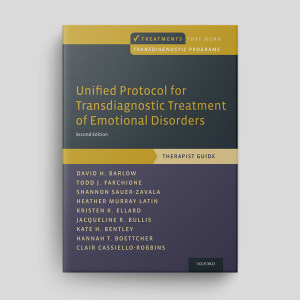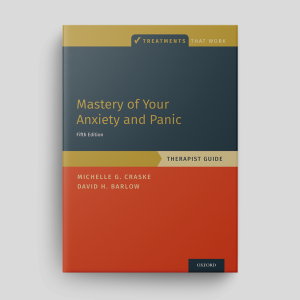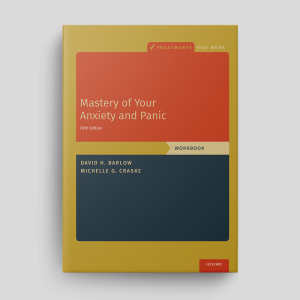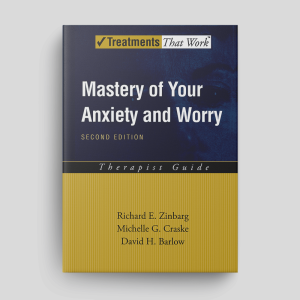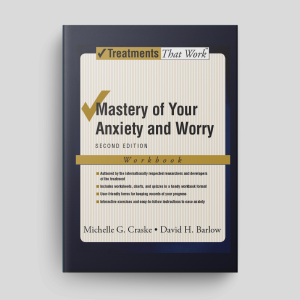Unified Protocol For Transdiagnostic Treatment Of Emotional Disorders (Second Edition): Client Workbook
The Unified Protocol For Transdiagnostic Treatment Of Emotional Disorders is an evidence-based treatment program designed to help individuals struggling with emotional disorders across various diagnoses.
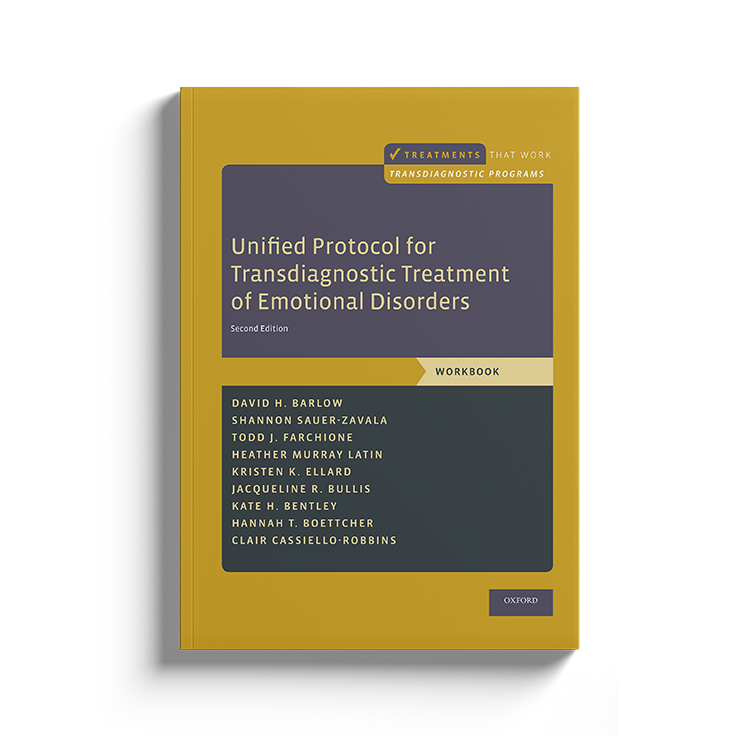
Download or send
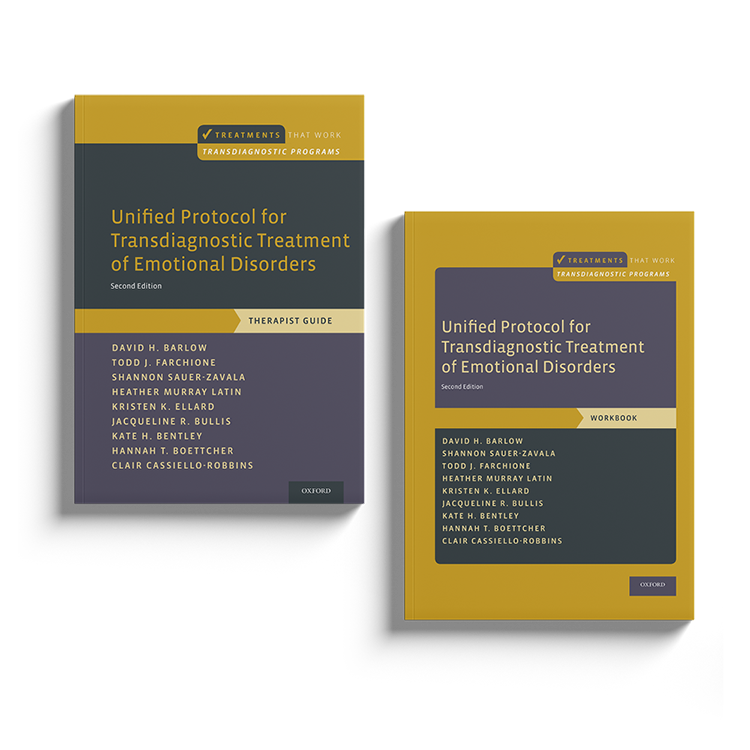
Overview
The Unified Protocol For Transdiagnostic Treatment Of Emotional Disorders (Second Edition) is a comprehensive program designed to assist clinicians to treat multiple common mental health conditions, such as anxiety, depression, and related disorders. It places particular emphasis upon the way individuals experience and respond to their emotions, and by targeting core emotional processes that maintain symptoms across disorders, the UP can be used to simultaneously address co-occurring conditions. There is strong empirical support for the use of the Unified Protocol, with indications that in some circumstances it can be as effective as disorder-specific protocols. There is also preliminary data that it can be successfully used with a broader range of difficulties including substance abuse, bipolar disorder, borderline personality disorder, and posttraumatic stress disorder. Part of the highly regarded Treatments That Work™ series, the Unified Protocol guides therapists and clients through 5 core treatment modules targeting key aspects of emotional processing.
Why use this resource?
This workbook provides a structured, accessible program for clients struggling with emotional disorders, written by experts.
- Explains what maintains common emotional disorders.
- Describes effective interventions for overcoming emotional disorders.
- Broken into a series of accessible chapters for clients.
- Authored by world-leading experts in the field
- Accompanied by a dedicated therapist guide.
Key benefits
Transdiagnostic
Structured
Educational
Evidence-Based
Flexibile
What difficulties is this for?
Anxiety Disorders
Persistent fears and worries.
Depression
Low mood, withdrawal, and loss of interest.
Emotion Dysregulation
Difficulty managing intense emotional responses.
Mixed Anxiety And Depression
Co-occurring symptoms of anxiety and low mood.
Integrating it into your practice
Assessment
Explore how clients experience depression or anxiety.
Psychoeducation
Teach clients about depression and anxiety and what maintains them.
Skills
Encourage clients to read the workbook and implement the strategies it describes.
Monitoring
Use structured worksheets and feedback to track progress and refine interventions.
Relapse Prevention
Equip clients with long-term strategies for maintaining their progress.
Theoretical background and therapist guidance
Many emotional disorders share common features. Three vulnerabilities which contribute to the development of anxiety, depression, and related disorder include the propensity to experience negative emotions frequently and intensely; a negative view of one’s emotional experiences; and a tendency to avoid or suppress negative emotional experiences in maladaptive ways which backfire.
Developed by David Barlow and colleagues, the Unified Protocol For Transdiagnostic Treatment Of Emotional Disorders (Second Edition) helps therapists to target these vulnerabilities by guiding clients through 5 core treatment modules:
- Mindful emotion awareness. Teach clients to cultivate a curious, present-focused, and non-judgmental attention toward their emotional experiences.
- Cognitive flexibility. Encourage clients to identify biases and be more flexible in their thinking by using appraisal strategies.
- Countering emotional behaviors. Help clients to identify their avoidance behaviors, and encourage them to use alternative actions.
- Understanding and confronting physical sensations. Use interoceptive exposure to reduce the impact of strong physical sensations on emotion aversion and avoidance.
- Emotion exposures. Help clients design an emotion exposure hierarchy, and carry out exposures to increase tolerance for emotions, while learning more about them.
By targeting these core emotional processes that maintain symptoms across disorders, the Unified Protocol (UP) can not only address a wide range of presenting conditions, but it can simultaneously address co-occurring conditions. Backed by strong empirical support, the Unified Protocol for Transdiagnostic Treatment of Emotional Disorders (Second Edition) is a comprehensive program which offers clinicians guidance on using UP. The program includes two books:
- Unified Protocol for Transdiagnostic Treatment of Emotional Disorders (Second Edition): Therapist Guide details the step-by-step treatment of emotional disorders using UP, including common obstacles.
- Unified Protocol for Transdiagnostic Treatment of Emotional Disorders (Second Edition): Workbook is the companion to this therapist guide. It will help your patients to become active participants in their treatment and learn how to confront difficult thoughts and emotions, both independently and with the support of a therapist.
The UP has now garnered strong empirical support for its use with a range of emotional disorders. In a small, randomized controlled trial (N = 37), it was found to significantly reduce symptoms for a range of anxiety disorders compared to a wait-list control group, with patients continuing to improve even 18 months after treatment (Bullis, Fortune, Farchione, & Barlow, 2014; Farchione et al., 2012). The results of a subsequent, larger (N = 223) trial suggested that the transdiagnostic UP approach is just as good at addressing the primary disorder as the targeted protocol designed explicitly for that condition. Multiple systematic reviews and meta-analyses have offered support for the UP as an evidence-based, efficacious psychotherapy: a systematic review of controlled and uncontrolled studies indicated a moderate to large combined effect sizes for the treatment of anxiety and depression (Carlucci, Saggino, Balsamo, 2021); and a systematic review and meta-analysis demonstrated large effect sizes for symptoms of anxiety and depression, with moderate effects upon neuroticism / negative affect (Longley & Gleiser, 2023).
Authored by leading psychologists including David Barlow, Michelle Craske and Edna Foa, Treatments That Work™ is a series of manuals and workbooks based on the principles of cognitive behavioral therapy (CBT). Each pair of books (therapist guide and workbook) - contains step-by-step procedures for delivering evidence-based psychological interventions and will help you to provide the best possible care for your clients.
At Psychology Tools, we are proud to make many of the Treatments That Work™ titles available to our members. Each book is available to download chapter-by-chapter, and Psychology Tools members with a currently active subscription to our ‘Complete’ plan are licensed to share copies with their clients.
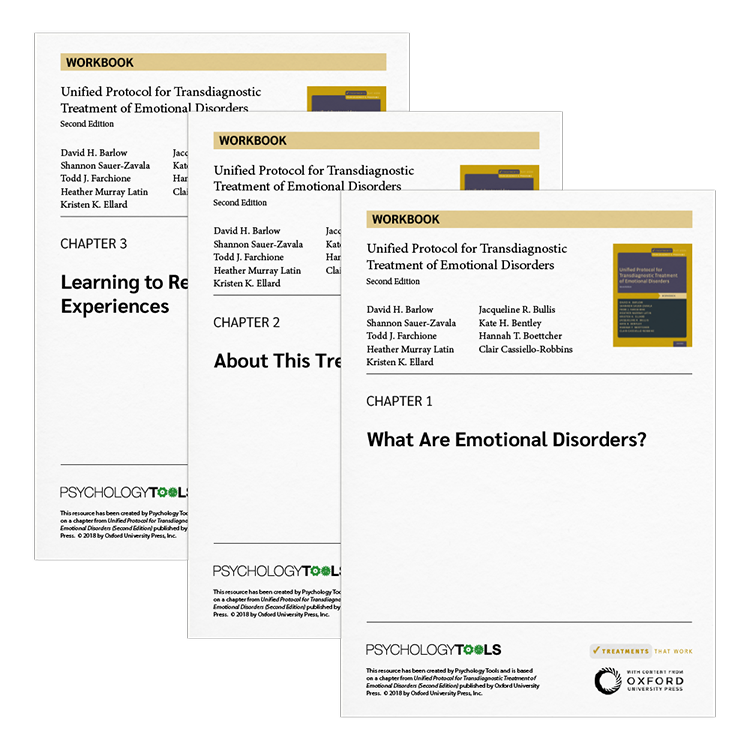
What's inside
- Comprehensive psychoeducation about emotional disorders.
- Effective interventions for achieving long-term improvement.
- Strategies for reducing the risk of relapse.
- Engaging and accessible content written specifically for clients.
FAQs
How this resource helps improve clinical outcomes
By using this workbook, clients benefit from:
- A structured and accessible approach that targets their difficulties.
- Trustworthy guidance and information.
- Effective techniques that enhance progress.
- Tools that support both in-session work and out-of-session practice.
- Lasting improvements and reduced risk of relapse.
Clinicians who use this resource also use
References and further reading
- Barlow, D. H., Farchione, T. J., Sauer-Zavala, S., et al. (2018). Unified Protocol for Transdiagnostic Treatment of Emotional Disorders: Workbook. Oxford University Press.
- Bentley, K. H., Gallagher, M. W., Carl, J. R., & Barlow, D. H. (2014). Development and validation of the overall depression severity and impairment scale. Psychological Assessment, 26, 815-830.
- Norman, S. B., Cissell, S. H., Means-Christensen, A. J., & Stein, M. B. (2006). Development and validation of an overall severity and impairment scale (OASIS). Depression and Anxiety, 23, 245-249.
- Segal, Z. V., Williams, J. M. G., & Teasdale, J. D. (2002). Mindfulness-Based Cognitive Therapy for Depression: A New Approach to Preventing Relapse. Guilford Press.
Just enter your name and email address, and we'll send you Unified Protocol for Transdiagnostic Treatment of Emotional Disorders (Second Edition): Client Workbook (English US) straight to your inbox. You'll also receive occasional product update emails wth evidence-based tools, clinical resources, and the latest psychological research.
Product
Company
Support
- © 2026 Psychology Tools. All rights reserved
- Terms & Conditions
- Privacy Policy
- Cookies Policy
- Disclaimer
Working...
We value your privacy
This site uses strictly necessary cookies to function. We do not use cookies for analytics, marketing, or tracking purposes. By clicking “OK”, you agree to the use of these essential cookies. Read our Cookie Policy
